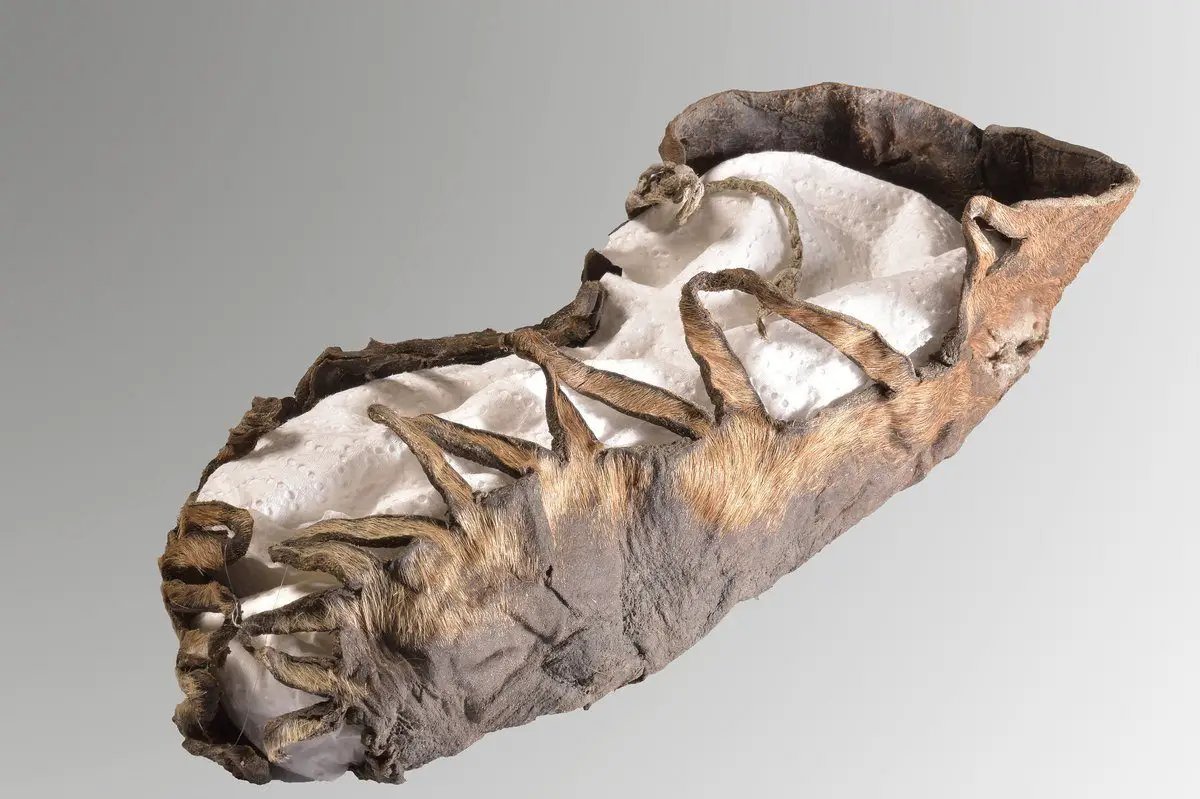Investigations of the Georgenberg Mine in Dürrnberg near Salzburg have led to the discovery of a well-preserved 2000-year-old children’s shoe.
The German Mining Museum Bochum and the Leibniz Research Museum for Georesources have been conducting archaeological research in the area since 2001.
Dürrnberg has been mined over thousands of years for the large deposits of rock salt, with previous studies in the region uncovering artefacts and evidence of tribal settlements from the Early Iron Age.
Recent excavations in the Georgenberg Mine have uncovered a 2,000-year-old children’s shoe. The shoe has been preserved due to the high salt levels in the mine which prevents the growth of bacteria and other microorganisms. “The condition of the shoe found is outstanding,” said research department head Prof. Dr. Thomas Stoellner.
The shoe is made of leather and has surviving remnants of a lacing made using flax or linen. Based on the typology of the shoe design, it was probably made during the 2nd century BC.
Leather shoes have been previously found in Dürrnberg, however, the child’s shoe indicates that children were present underground during mining activities thousands of years ago. Excavations also found a fragment of a wooden shovel and the remains of fur with a lacing, which according to the researchers probably belonged to a fur hood.
The study of Iron Age salt mining at Dürrnberg is part of a long-term research project funded by Salinen Austria AG and Salinen Tourismus, and is carried out in collaboration with the Institute for Archaeological Sciences at the Ruhr University Bochum.
“Organic materials generally decompose over time. Finds like this child’s shoe, but also textile remains or excrement like those found on Dürrnberg, offer an extremely rare insight into the life of Iron Age miners,” said Dr Stoellner.
Header Image Credit : German Mining Museum Bochum







